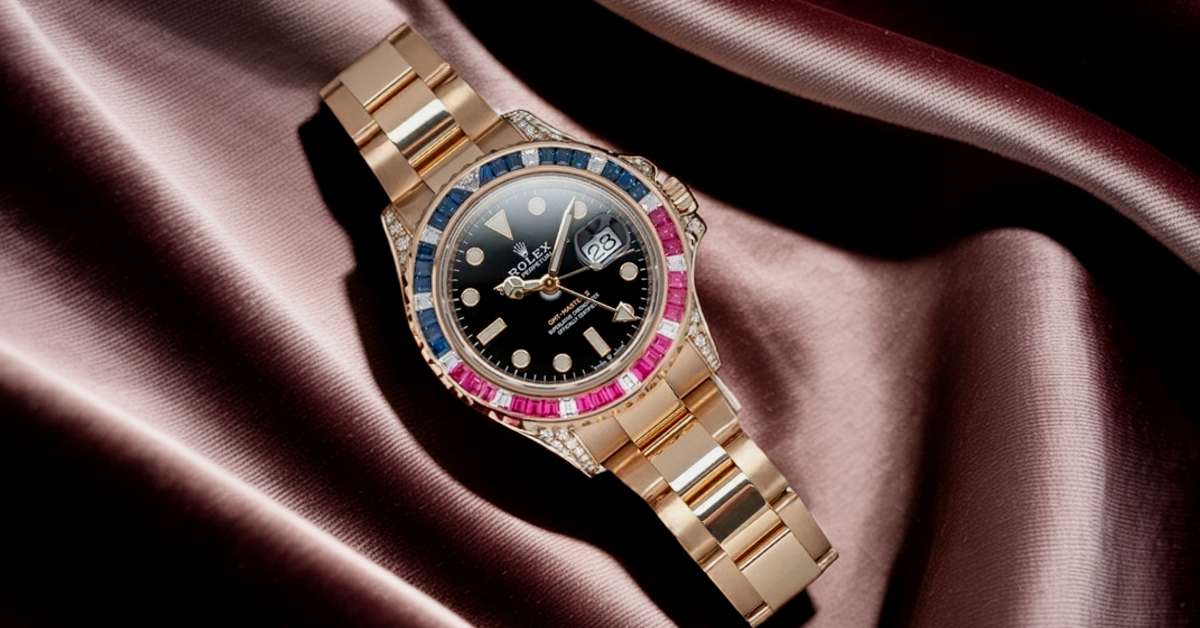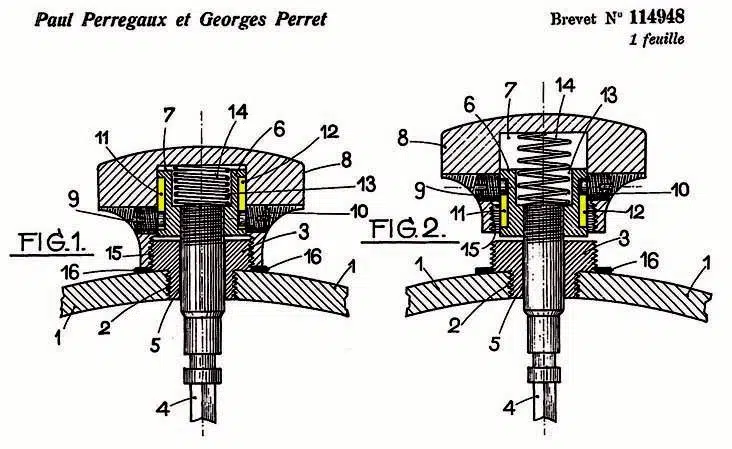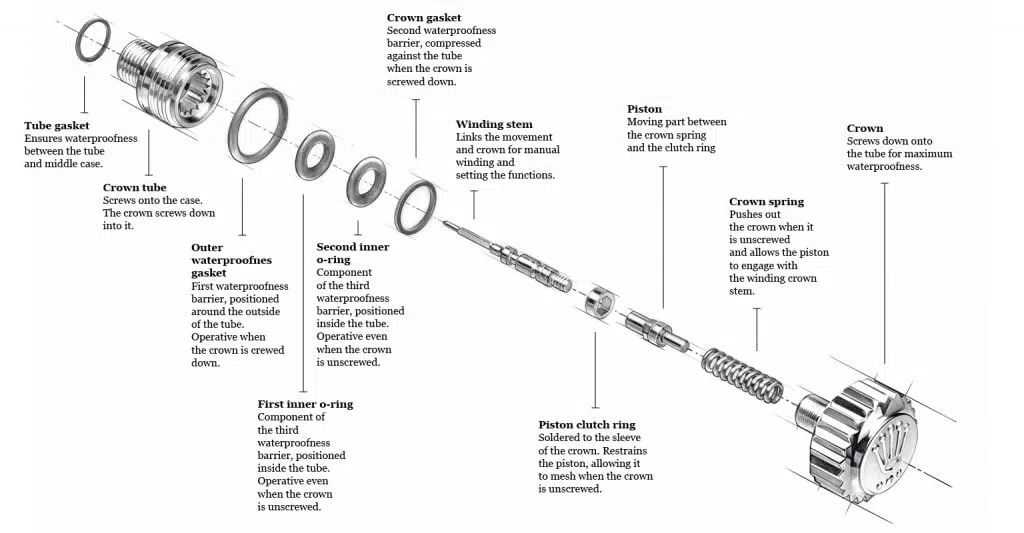
Rolex SARU GMT-Master II Review: The Most Stunning Watch I’ve Ever Tested
Rolex SARU watches stand among the most visually striking timepieces the legendary watchmaker has ever created. These rare gems combine brilliant sapphires and rubies (hence
Did you know that the term “waterproof” is technically misleading for watches? Many people wonder if Rolex watches are waterproof. The truth is, Rolex timepieces are “water-resistant” instead of completely waterproof. This means they can handle water pressure up to certain depths for limited time periods.
Rolex became a leading manufacturer of water-resistant timepieces after creating the revolutionary Oyster case in 1926. This breakthrough created a hermetic seal that protected the movement from water and dust. The water resistance levels vary by a lot across different Rolex models. Standard Oyster models resist water up to 100 meters (330 feet). The Submariner takes this further with protection up to 300 meters (1,000 feet). The Sea-Dweller and Deepsea models redefine the limits of water resistance. These watches can handle depths of 1,220 meters (4,000 feet) and 3,900 meters (12,800 feet).
Rolex’s water resistance isn’t permanent. The watch’s gaskets, made from rubber, nylon, or Teflon, seal the case parts but can wear down over time. Regular maintenance keeps the water resistance intact. Rolex tests each watch rigorously underwater. The pressure testing exceeds the rated depth by 10% to ensure reliability when you need it most.
Many watch enthusiasts ask: are Rolex watches waterproof? The simple answer is no—not because Rolex’s engineering falls short. The term “waterproof” creates unrealistic expectations about what any timepiece can do.
The word “waterproof” suggests that a watch can resist water completely under any condition—a claim no watch can validate. Even the best-built timepieces will let water in if they stay underwater too long or face extreme pressure.
A watch labeled as waterproof would need to keep moisture out at any depth, for any time, in any condition—something no watchmaker can guarantee. Water resistance also doesn’t last forever. Seals and gaskets naturally wear down over time.
The watch industry now uses more accurate terms. “Water-resistant” better describes how well a watch can keep water out under specific conditions and time limits.
The Federal Trade Commission (FTC) tackled this language issue back in the 1960s by banning “waterproof” in watch ads. They found that “waterproof” suggested “a measure of absolute protection that unfortunately does not exist with respect to watches, especially over prolonged periods of time”.
This decision made manufacturers change their terminology. They switched to the more accurate “water-resistant” label and added specific depth ratings based on standard tests.
These FTC guidelines stayed until 1999. They weren’t dropped because “waterproof” became correct, but because international standards like ISO 2281 and ISO 6425 were now accessible to more people, making the original rules unnecessary.
A 2007 study by Swatch Group engineers showed something interesting. The pressure on watches during normal water activities is nowhere near what people thought. Their research showed that a watch tested at just two bar (20 meters) could handle most water activities except diving.
Rolex takes a different viewpoint on water resistance. Their website uses “waterproofness” instead of “water resistance,” describing it as “merely a corollary of the expertise with which our entire manufacture produces them, from design to final assembly”.
This shows Rolex’s faith in their Oyster case technology. The Oyster case was a breakthrough in 1926 that changed how watches keep water out. Every Rolex Oyster model can resist water to at least 100 meters, while their diving models go much deeper.
Rolex watches stand out not because they’re “waterproof” but because they achieve exceptional water resistance through precise engineering. The company tests each watch in hyperbaric tanks at pressures beyond their rated depth.
All the same, Rolex watches need proper care to maintain their water resistance. Several things can affect a Rolex’s water resistance:
That’s why Rolex suggests regular service to keep optimal water resistance—they know that even their exceptional timepieces can’t claim eternal “waterproofness.”

Image Source: ScrewDownCrown – WordPress.co
Rolex’s water resistance stems from a breakthrough that dates back to 1926—the revolutionary Oyster case. This design changed watchmaking history forever and remains the life-blood of Rolex’s exceptional water resistance capabilities today, almost a century later.
Rolex created what would become its signature achievement in 1926—the world’s first waterproof wristwatch case. The company’s founder, Hans Wilsdorf, gave it the perfect name “Oyster” case. He explained that “like an oyster, it can remain an unlimited time underwater without detriment to its parts”. This solved a major problem with wristwatches, which didn’t deal very well with moisture, dust, and pressure damage.
Waterproof designs before the Oyster case couldn’t keep water out properly or needed complicated handling to work. The innovation seemed so unbelievable that Rolex stores displayed their watches in aquariums to prove they worked. People needed this visual proof because a truly water-resistant wristwatch seemed impossible at the time.
The Oyster case’s brilliance lies in its deceptively simple yet effective hermetic sealing system. The design earned a patent by using three key components—the bezel, case back, and winding crown—that screw down against the middle case to create an impenetrable barrier.
The original bezel had fluting that let it screw onto the middle case using Rolex’s exclusive tool. Fine fluting around the case back’s edge helped secure it firmly. The crown, the most vulnerable spot for water entry, got a complete redesign with the patented screw-down system.
Rolex launched the Twinlock crown in 1953. It used a double gasket system—one inside the tube and another inside the crown—to create two sealed zones. This system evolved into the Triplock crown for diving watches by 1970. It featured three sealed zones to improve protection. You can spot these crowns by their marks: one dot, two dots, or a line for Twinlock, and three dots below the Rolex emblem for Triplock.
Today’s Oyster cases use incredibly durable materials. Rolex stamps and machines the middle case from solid blocks of Oystersteel (their unique 904L stainless steel alloy), 18k gold, or 950 platinum. These materials look luxurious and resist corrosion and pressure exceptionally well.
RLX titanium made its debut in the Deepsea Challenge model. This Grade 5 titanium alloy contains aluminum and vanadium and weighs 40% less than steel. The watch tips the scales at 251 grams instead of 350 grams in steel. This material choice helps the watch achieve an incredible 11,000 meters of water resistance.
Rolex created the Ringlock system in 2008 for extreme depths. It combines a slightly domed sapphire crystal, a nitrogen-alloyed steel compression ring, and a titanium alloy case back. This patented architecture lets models like the Deepsea handle pressure at depths of 3,900 meters (12,800 feet).

Image source: Bob Watches
The crown is maybe the weakest spot where water can enter a watch. Rolex tackled this problem by creating two advanced crown systems that seal off any potential water entry.
Rolex launched the Twinlock crown in 1953 with their Submariner, which was a huge step forward from older single-seal designs. The system uses two sealed zones with synthetic O-ring gaskets instead of metal washers. A first gasket sits inside the crown and presses against the tube’s top when screwed down. The second gasket fits inside the tube around the winding stem.
This design works really well because it stays protected even when you unscrew the crown to set time or wind the watch. The second seal also helps keep the winding stem stable during use.
Most non-diving Rolex watches now come with the Twinlock crown as standard equipment. These include the Datejust, Day-Date, Oyster Perpetual, Sky-Dweller, Air-King, Milgauss, and Explorer collections. Each watch can resist water up to 100 meters (330 feet).
Rolex revealed a better crown system in 1970 with their Sea-Dweller. The Triplock crown adds another sealed zone, creating three barriers against water. The design places two O-ring gaskets in the tube and adds a third under the crown.
This strong system delivers amazing water resistance. The Submariner (which got the Triplock in 1977) handles depths of 300 meters. The Sea-Dweller goes down to 1,220 meters, while the Deepsea reaches an incredible 3,900 meters. Some professional models like the Daytona, GMT-Master II, and both Yacht-Master versions use the Triplock with only 100m ratings. We used this mainly because the bigger crown looks better with their case sizes.
Rolex marks each crown with specific symbols that show both the crown system type and watch material. Current Twinlock crowns have these markings:
Triplock crowns follow a different pattern:
These small details help watchmakers and collectors quickly identify crown systems without taking the watch apart.
The difference between casual enthusiasts and informed collectors lies in their knowledge of Rolex water resistance ratings. These numbers reflect specific capabilities that matter in real-life situations.
A 30m rating means the watch can handle rain and minor splashes but swimming isn’t recommended. Watches rated at 50m allow light swimming, though shower pressure might exceed test conditions. The Cellini and other Rolex dress watches come with 50m resistance.
Rolex gives 100m ratings to most of its collection—the Datejust, Day-Date, Sky-Dweller, Oyster Perpetual, Air-King, Milgauss, Explorer, Explorer II, Yacht-Master, Yacht-Master II, GMT-Master II, and Daytona. These watches perform well during swimming and snorkeling but aren’t meant for scuba diving or intense water sports.
Watches with 200m ratings can handle recreational scuba diving. They work great for most water activities but aren’t suitable when diving with mixed gasses.
The legendary Submariner, rated at 300m, leads Rolex’s recreational diving lineup. This rating lets you enjoy all water sports and extended scuba sessions—everything except saturation diving.
The Sea-Dweller’s introduction in 1967 fixed a crucial issue with the Submariner—crystals popping out during decompression in saturation dives. Rolex added a helium escape valve to release trapped gas. Modern Sea-Dweller models reach depths of 1,220m (4,000 feet).
Launched in 2008, the Deepsea Sea-Dweller pushes limits to 3,900m (12,800 feet). The Ringlock system makes this possible through its nitrogen-alloyed steel compression ring, specialized crystal, and sturdy case design.
Rolex broke records in 2022 with their first titanium watch—the Deepsea Challenge. This watch achieves an incredible 11,000m (36,090 feet) rating and can theoretically survive pressures at the Challenger Deep, the Mariana Trench’s lowest point.
The watch uses RLX grade 5 titanium, which makes it 40% lighter than steel versions. A prototype proved its worth during James Cameron’s historic 10,908m descent in 2012.
Even the strongest Rolex watches struggle to keep their water resistance as they age. Every Oyster case needs proper care to protect its sealing power, no matter what its original rating was.
Rolex’s water resistance depends heavily on special gaskets made from rubber, nylon, or Teflon—materials that break down naturally over time. These crucial parts usually last 5-10 years. The gaskets slowly lose their bounce and can’t seal out moisture as well as they used to.
This wear and tear happens even when you take perfect care of your watch. You should assume vintage Rolex models have lost their water resistance unless they’ve been serviced recently. That’s why Rolex tells owners to get regular maintenance, which includes new gaskets and water resistance tests.
High temperatures speed up gasket damage. Your Rolex’s gaskets can warp if you wear it in saunas, hot tubs, or even hot showers. Rolex uses advanced fluoropolymers that handle heat well, but no material stays perfect forever.
Chemicals pose another big threat to your watch. Soap, shampoo, perfume, and cleaning products can damage the seals. Salt water’s corrosive nature can also eat away at gasket integrity. These everyday items slowly chip away at your watch’s water resistance.
Rolex makes parts with incredible precision—down to microns—and tests them thoroughly before making any water resistance claims. Non-Rolex parts just don’t meet these engineering standards and create big risks. Watch repair by non-authorized technicians can also ruin water resistance.
Pressure testing must follow any service work to check water resistance. Gaskets might look perfect but still fail under pressure without proper testing.
The most common water resistance failure comes from a simple mistake—people forget to screw down the crown after setting time or winding. Twinlock and Triplock systems should protect against unscrewed crowns, but this protection gets weaker when:
To keep your Rolex water-resistant:
Learning about Rolex water resistance shows what these impressive timepieces can handle. Rolex watches lead in water resistance technology, but they need proper care to keep their protective features working well. Your Rolex offers different levels of water resistance based on its model, since no watch is truly “waterproof.”
The groundbreaking Oyster case works with advanced Twinlock and Triplock crown systems to shield against moisture. Chemical exposure, gasket wear, and poor maintenance will reduce this protection over time. Regular service from authorized technicians keeps your timepiece’s water resistance strong.
Rolex’s reputation comes from years of breakthroughs in water resistance technology. Their range spans from standard models that handle daily splashes to the remarkable Deepsea Challenge that can reach the ocean depths. Each watch shows Rolex’s steadfast dedication to precision engineering. Knowing your watch’s limits helps it last longer, whether you swim with a Datejust or dive with a Submariner.
A Rolex combines excellent timekeeping with practical features. You can buy waterproof Rolex watches online through authorized dealers who ensure authenticity. Whatever your purchase source, note that good maintenance will preserve your Rolex’s water resistance for future generations.
Rolex watches are not technically “waterproof” but rather highly water-resistant. The term “waterproof” is misleading as no watch can be completely impervious to water under all conditions indefinitely. Rolex uses the term “water-resistant” to accurately describe their watches’ ability to withstand water ingress to certain depths and for limited periods.
Most Rolex watches, including popular models like the Datejust, Day-Date, and Oyster Perpetual, have a water resistance rating of 100 meters (330 feet). This makes them suitable for swimming and snorkeling but not for scuba diving. Some professional models like the Submariner offer higher ratings of 300 meters or more.
While many Rolex watches can technically withstand shower conditions, it’s generally not recommended. Soap, shampoo, and hot water can potentially degrade the watch’s seals over time. Additionally, the sudden temperature changes in a shower can affect the watch’s water resistance. It’s best to remove your Rolex before showering as a precautionary measure.
Rolex achieves its impressive water resistance through the Oyster case, first introduced in 1926. This case features a screw-down crown, case back, and bezel that create a hermetic seal. Additionally, Rolex uses sophisticated Twinlock and Triplock crown systems with multiple gaskets to further enhance water resistance.
Rolex recommends having your watch’s water resistance checked annually, especially if you frequently expose it to water. Over time, gaskets and seals can degrade, potentially compromising the watch’s water resistance. Regular servicing by an authorized Rolex technician can help maintain your watch’s water resistance capabilities and overall performance.

Rolex SARU watches stand among the most visually striking timepieces the legendary watchmaker has ever created. These rare gems combine brilliant sapphires and rubies (hence

The KAWS AP watch’s unique appeal comes from its distinctive features. A meticulously crafted miniature Companion figure seems trapped inside the watch face and presses

Have you ever imagined wearing a timepiece worth $6.5 million? That’s the reality for Ed Sheeran, whose watch collection costs more than most people’s homes.